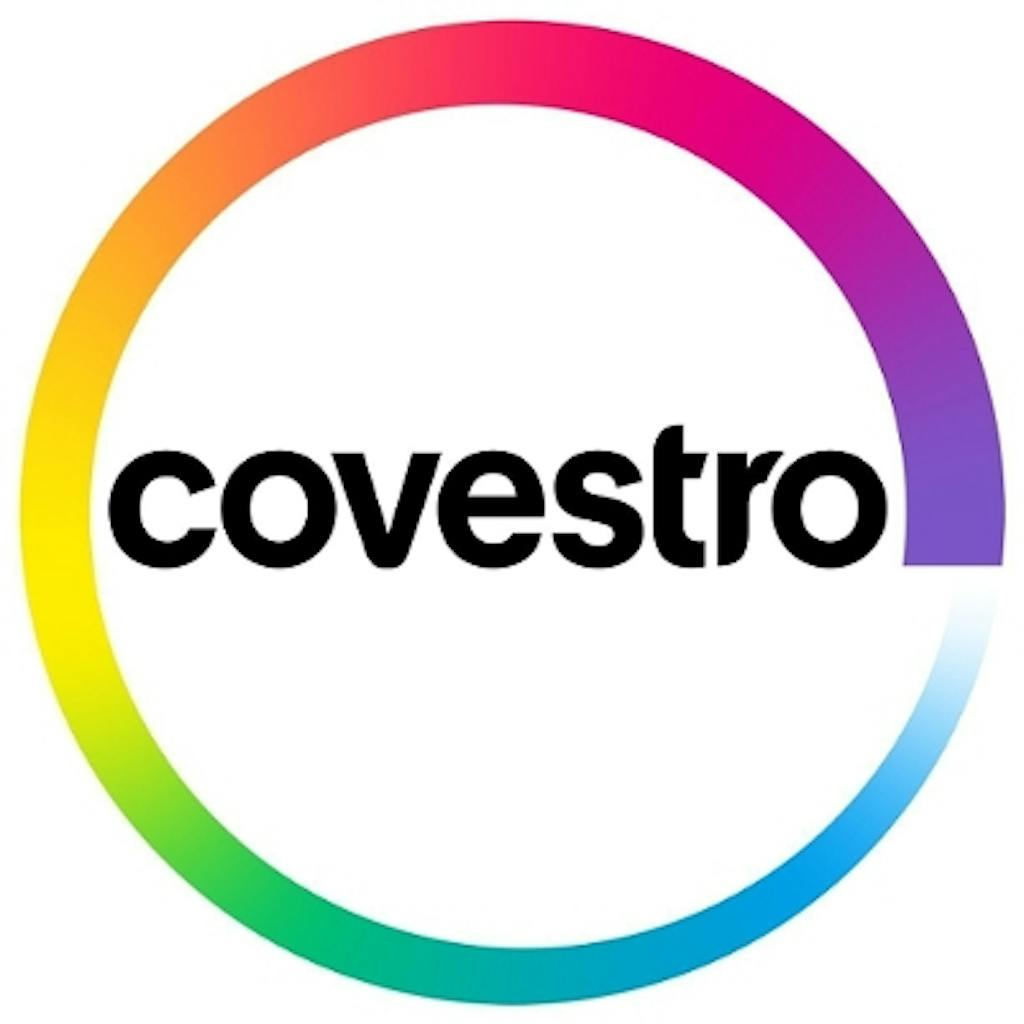The Urethane Blog
Everchem Updates
VOLUME XXI
September 14, 2023
Everchem’s exclusive Closers Only Club is reserved for only the highest caliber brass-baller salesmen in the chemical industry. Watch the hype video and be introduced to the top of the league: — read more
September 10, 2023
Covestro’s supervisory board to discuss negotiations with Adnoc
Today at 14:45

LEVERKUSEN (dpa-AFX) – The supervisory board of plastics group Covestro plans to discuss the start of formal negotiations with prospective buyer Abu Dhabi National Oil Co (Adnoc) this week, according to a report. The news agency Bloomberg reported this on Friday, citing people familiar with the matter. According to the report, the oil company had most recently offered 60 euros per Covestro share, which would give the DAX-listed group a valuation of 11.6 billion euros. Neither Adnoc nor Covestro would comment on the matter when asked by Bloomberg. Covestro is said to have rejected earlier informal offers of 55 euros and 57 euros per share as too low.
On the stock exchange, the news provided a boost: Covestro’s shares shot up by almost ten percent in the afternoon. At last count, the share price was around 52.48 euros, the highest since the outbreak of the Ukraine war.
As Bloomberg further reports, Adnoc is beckoning with investments in the group. According to the report, the oil company could secure a cash injection of $8 billion (7.5 billion euros) if a deal goes through. That would help win over both management and representatives of the workforce.
Adnoc has been expanding its involvement around the chemicals business for some time. The group claims almost all the oil for the United Arab Emirates. It has investment plans of $150 billion to expand its natural gas, chemicals and clean energy businesses worldwide./jcf/nas
September 10, 2023
Mitchell Gold + Bob Williams files for bankruptcy
Staff
Wed, September 6, 2023 at 6:00 PM EDT·2 min read

Homepage image: Courtesy of Business of Home
Bankruptcy | Sep 6, 2023
By Staff
Mitchell Gold + Bob Williams filed for Chapter 11 bankruptcy today, less than two weeks after it ceased operations of its 27 retail locations and its North Carolina–based manufacturing facilities.
The filing, submitted to Delaware bankruptcy court this afternoon, lists between 200 and 300 creditors, which are owed between $10 million and $50 million. Among the list: logistics firms Transportation Insight and Ryder Last Mile; fabric powerhouse Kravet; leather purveyor Moore & Giles; and 3D product visualization firm Cylindo. The document states that MG+BW has between $10 million and $50 million in assets on hand.
As part of the restructuring plan outlined in its bankruptcy petition, the company said it will hire a chief restructuring officer—listed in the filing as Dalton Edgecomb, senior managing director of the consulting company Riveron—to carry out duties instructed by the company’s CEO or board. The filings also point to the hiring of M&A firm Stump & Company to supervise a potential sale of assets out of bankruptcy.
Speaking to Business of Home last week, Gold, who stepped down as the company’s CEO in 2019, said that the company’s abrupt shutdown was the result of a disagreement between its private equity owners, The Stephens Group, and its lender, PNC Bank, about how to finance its continued operations. The filings state that the company ceased taking deposits at all its retail locations and online on the morning of August 25, following PNC’s decision to deny further funding.
Founded in 1989 by Gold and Williams, the brand was well-liked by the trade and consumer audiences alike, and its abrupt closure was met with shock. Last week, Gold told BOH that he was actively looking for investors to finance a $20 million to $30 million revitalization of the company.
The filing hints that the company is still hoping for a buyer in some form, stating that MG+BW has secured debtor-in-possession financing—a type of loan for companies in bankruptcy that allow them to continue operating—“in order as it is able to preserve its assets” and has received “multiple third party expressions and indications of interest for groups of assets.”
https://www.yahoo.com/lifestyle/mitchell-gold-bob-williams-files-220000451.html
15 Mitchell Gold + Bob Williams suppliers account for 91% of money owed to top unsecureds
Furniture Today Staff//Staff Editors//September 7, 2023
By Sheila Long O’Mara
WILMINGTON, Del. – Mitchell Gold + Bob Williams owes nearly $11 million to its top 30 unsecured creditors, according to the company’s Chapter 11 petition filed with the U.S. Bankruptcy Court here Wednesday, less than two weeks after the sudden shutdown of its three North Carolina facilities and retail stores.
The top 15 unsecured creditors are owed more than $8.6 million.
Companies on the list include a number of furniture, lighting, fabric and leather suppliers, as well as foam and frame producers. Foam supplier Carpenter Co., leather supplier Moore & Giles, Hudson Valley Lighting Group, Surya, Kravet, Stone & Leigh and Global Textile Alliance all hold unsecured claims with the company.
Atlanta-based Transportation Insight, a logistics company, is owed $3.92 million. Nahan Printing is No. 2 on the list and is owed $554,589.84.
The company’s top 30 creditors and the amount of the unsecured claims are:
- Transportation Insight – $3.92 million
- Nahan Printing – $554,589.84
- Ryder Last Mile – $490,940.22
- Need It Now – $490,306.44
- Cigna – $419,864.25
- Interstate Foam & Supply – $385,843.04
- Cylindo – $316,032.42
- Danao Living – $303,701.78
- Carpenter Co. – $297,555.66
- J.B. Hunt – $284,381.10
- Global Response – $284,344.08
- Moore & Giles – $277,984.47
- Fenom Digital – $238,565.24
- Healthstat – $218,083.71
- Ideal Frames – $184,092.98
- Carolina Casting – $175,206.96
- Hudson Valley Lighting Group – $173,758.84
- Locke Co., Ltd. – $167,756.00
- Ramsey’s Finishing – $166,361.15
- Kravet – $153,616.50
- Queen Transportation – $153,272.52
- Hilco Merchant Resources – $152,362.40
- Harlee Packaging Components – $139,509.68
- Surya Carpet Inc. – $138,026.65
- Stone & Leigh – $136,161.13
- Framewright – $136,146.00
- Phuc Thang Fine Furniture – $135,657.00
- Global Textile Alliance – $129,274.06
- Content Square – $125,535.18
- H. Nicholas & Co. Joint Stock Co. – $123,401.93
September 8, 2023
CertiPUR-US® Program Begins Certifying Biobased Foams
Future Foam, FXI, NCFI Polyurethanes and Kuka Home are first foam producers to offer CertiPUR-US® certified 25% biobased foams

(Rochester Hills, Mich. – September 8, 2023) The CertiPUR-US® foam certification program is now certifying biobased slabstock flexible polyurethane foam. To achieve biobased foam certification, foams must meet all current criteria for foam certification and contain a minimum of 25% biobased content.
U.S.-based foam producers Future Foam, FXI, NCFI Polyurethanes and Mexico-based Kuka Home are the first to offer CertiPUR-US certified biobased foam, having participated in the pilot program which was launched earlier this year.
“We praise the foam producers who are early adopters and expect many other foam producers to follow,” said CertiPUR-US Executive Director Michael Crowell. “We are confident that bedding and upholstered furniture manufacturers will see the tremendous environmental and marketing benefits in using biobased foam and will create demand for this category of certified foams.”
All certified foams must undergo emissions testing, chemical analysis and physical property testing to meet the rigorous standards set forth in the program’s Technical Guidelines. In addition, all biobased foams are tested by Beta Analytic laboratories in Miami to determine the percentage of biocontent.
Beta Analytic, an ISO/IEC 17025:2017 accredited laboratory, provides radiocarbon dating and biobased testing services. The biobased content of product ingredients is based on the ASTM D6866-22 Method B standard, which uses an Accelerator Mass Spectrometer (AMS) instrument to measure how much of the carbon within a product is derived from biomass. The result indicates the percentage of the product’s biobased carbon versus fossil-derived carbon.
Certified biobased foams will have permission to use an exclusive, new CertiPUR-US logo, which will be an easily recognized adaptation of the current CertiPUR-US logo and only used in association with products that contain certified biobased foams.
As with all certified foams, once a biobased foam is certified, it must be recertified six months later and annually thereafter. Random verification testing is conducted by the CertiPUR-US program to ensure continued compliance. Producers and their customers also must agree to new Terms of Use, which establish guidelines on how a CertiPUR-US biobased foam may be marketed.
The CertiPUR-US program, now celebrating its fifteenth year, is administered by a nonprofit organization. For more information about certified biobased foam and to contact foam producers currently offering certified biobased foam, visit certipur.us/biobased.
www.certipur.us
September 5, 2023
The perpetual truck driver shortage is not real
Number of trucking carriers has increased 45% since July 2019
Craig Fuller, CEO at FreightWaves
· Tuesday, September 05, 2023

Listen to this article
0:00 / 5:04BeyondWords
The seemingly perpetual marketwide truck driver shortage is not real, nor is it marketwide. While specific fleets can and do have driver shortages — i.e., unseated trucks — the trucking market quickly corrects.
There also are periods of capacity shortages, but those get addressed very quickly by the market.
With no barriers to entry, almost anyone can create a trucking company. That is exactly what has happened over the past four years.
Operating authority for motor carriers of property issued by the Federal Motor Carrier Safety Administration grew by 45% from July 2019 to August 2023, according to FreightWaves SONAR’s latest data, released in partnership with Carrier Details. Truckload demand as measured by the SONAR Outbound Tender Volume Index (OTVI) is only up about 11% during the same period.
The current difficult conditions in trucking are a result of too much capacity chasing too little freight.
Where does the perpetual driver shortage myth come from?
Generally speaking, the driver shortage myth stems from larger trucking companies that find it difficult to recruit drivers into their fleet operations. After all, fleets have to compete for truck drivers with other trucking companies. In addition, some licensed truck drivers go to work in other sectors of the economy, like construction and warehousing. But the fleets also have to compete against the growth of independent operators.
The American Trucking Associations propagates the narrative of the shortage. ATA members consist of midsize and large trucking fleets, which have increasingly become a smaller percentage of the trucking industry’s total capacity.
The ATA’s membership dues are indexed based on company size. For example, a large fleet with $4 billion in revenue will pay a much larger fee than a carrier with $50 million in revenue. Moreover, the ATA is a trade association and lobbying organization, which seeks to influence Congress when it considers legislation that impacts the trucking industry.
As the ATA encourages Congress to pass laws and appropriations that fund employee driver training and recruitment programs — while minimizing regulations that favor larger trucking fleets that employ drivers rather than independent owner-operators — it helps to paint a picture of a perpetual driver shortage.
After all, if Congress realized how fast capacity enters the market from independent operators when there is a capacity crunch, it would mitigate the need for employee driver recruitment and retention entitlement programs.
The FMCSA data tells the story about the growth of the small independent fleet
SONAR, FreightWaves’ proprietary data platform, collects data from a number of sources, including the FMCSA, the regulatory body that oversees the trucking industry. One of the FMCSA’s data sets tracks fleet registrations by the number of trucks that are assigned to a particular fleet.
SONAR breaks down the fleet sizes into cohorts to provide a more accurate reflection of the growth and fragmentation of trucking fleets.
In the SONAR chart below, the white line is the total number of tractors among fleets of one to six trucks; the purple line is the total number of tractors among fleets of seven to 11 trucks; the yellow line is the total number of tractors among fleets of 12 to 19 trucks; the blue line is the total number of tractors among fleets of 20 to 100 trucks; the orange line is the total number of tractors among fleets of 101 to 999 trucks; and the green line is the total number of tractors among fleets of 1,000 trucks and more.
Of the 2.9 million trucks in the market, 1.2 million are in fleets with more than 100 trucks — or just 41%. In 2010, fleets with more than 100 trucks comprised 54% of total trucking capacity.
Midsize and large fleets have problems recruiting new employee drivers, often due to lifestyle issues. Many drivers do not want to be away from home for days or weeks at a time, especially in a forced dispatch operation, which is typical of truck driver fleet operations.
For truck driving entrepreneurs who want to have the autonomy of their own operations, no such challenges exist. After all, if you want to dictate which loads make sense for you, based on destination, time in transit or even commodity, you can do so as an independent trucker with far more control than an employee fleet driver. Therefore, independent owner-operator entrepreneurs are constantly entering the market.
With the barriers to entry for new fleets becoming increasingly less burdensome, the number of smaller fleets in the industry will continue to grow. I broke down this phenomenon last week in an article on the growth of mom-and-pop trucking companies.
A downside to this trend? It is likely that boom and bust cycles in trucking become more pronounced and violent.
But for now, a capacity correction is underway and this is welcome news for everyone in the trucking industry.
August 31, 2023


